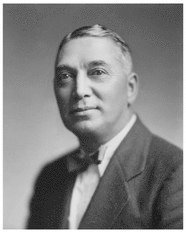In 2024 the new Te Rangihīroa College will open on the corner of Forth and Albany streets. The name of Te Rangihīroa College was moved from the first building named Te Rangi Hiroa College, which is now known as 192 Castle College.

Te Rangihīroa College incorporates design input from Te Rangihīroa's Ngāti Mutunga iwi and local Ngāi Tahu. The taonga including a carving, a tukutuku panel, photos of his life and other mementos of his work and achievements are present throughout the ground floor of the College.
The name was gifted to the University of Otago in 2013 following permission granted from Te Rangihīroa's iwi and his surviving family members in honour of its first Māori graduate.
Te Rangihīroa (Sir Peter Buck) graduated in 1904 in medicine, and later received an MD in 1910, his doctoral thesis being 'Medicine amongst the Māori, in ancient and modern times'. Te Rangihīroa was the first Māori medical graduate from a New Zealand University.
Te Rangihīroa is reverently remembered as a great son of Taranaki, and a leader and doctor among his people; a man who used his medical training to stem the tide of profound and serious health problems that almost wiped out the Māori population in the first part of the twentieth century. Late in 2013, at a hui attended by representatives of the University and Ngāi Tahu, Dr Tony Ruakere, a graduate in medicine from Otago in 1970 and a Kaumatua from Te Rangihīroa's iwi, Ngāti Mutunga, spoke of his admiration for Te Rangihīroa: how Te Rangihīroa was at 'the coal-face' of turning the tide on diseases besetting Māori, including smallpox, tuberculosis, and scabies. This was a critical time in Māori history, he said.
Te Rangihīroa later became a Member of Parliament and a distinguished soldier who was decorated with the DSO for bravery in the field at Gallipoli and in the Somme, with the rank of Lieutenant Colonel. He also later developed a lifelong passion for anthropology with specific reference to the Pacific migrations and the cultures of Pacific peoples. For the last twenty years of his life he was the Director of the Bishop Museum in Hawaii, and was also made a visiting Professor at Yale University. Te Rangihīroa received an honorary Doctorate of Science from the University of Otago in 1937, and was knighted in 1946.
Each of the four wings of the building are named Manawa Nui (ambition and courage), Manawa Toka (strength and determination), Manawa Tina (resoluteness), and Manawa Roa (resilience), all of which flow from the central pillar, He Manawa Ora: Pou Taiki. This central pillar is the tensioning post that binds Taranaki and Ōtākou with the journey of the tauira within their care, guiding and nurturing their wellbeing.
It is fitting that the University chooses to honour this very distinguished alumnus in this way. Te Rangi Hiroa College first opened in February 2014, with Te Rangihīroa College set to welcome 450 new students in February 2024.
